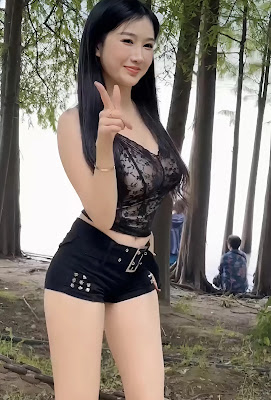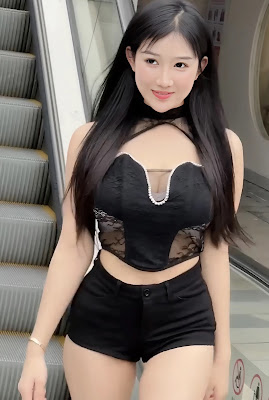The art of makeup, a practice that dates back thousands of years, has evolved into a multifaceted and intricate discipline embraced by women worldwide. The journey of makeup from ancient rituals to modern expressions of identity reflects broader cultural, social, and technological transformations. This text delves into the history, significance, and contemporary practices of makeup among women.
The origins of makeup can be traced to ancient civilizations, where it served various purposes, from religious and cultural rituals to expressions of social status and beauty ideals. In ancient Egypt, both men and women used kohl to line their eyes, not only for aesthetic reasons but also for protection against the sun and warding off evil spirits. Cleopatra, one of history's most famous figures, was known for her elaborate makeup routines, using natural ingredients like crushed beetles for red lipstick and malachite for green eye shadow.
Similarly, in ancient Greece and Rome, women used white lead to lighten their skin and berries to tint their lips and cheeks. These practices highlighted the societal importance placed on beauty and the lengths to which individuals would go to achieve it, despite the often dangerous materials used.
#### Middle Ages to Renaissance
During the Middle Ages, the use of makeup was influenced by varying cultural and religious attitudes. In Europe, pale skin became a symbol of wealth and status, as it indicated a life spent indoors away from manual labor. Women used mixtures of white lead and vinegar to achieve this look, often at the expense of their health.
The Renaissance period saw a resurgence in the use of cosmetics, influenced by the increased focus on art, beauty, and humanism. Portraits from this era often depict women with pale skin, rosy cheeks, and delicate features, reflecting the beauty standards of the time. The use of cosmetics became more sophisticated, incorporating ingredients like vermilion and saffron to achieve vibrant colors.
### Modern Era
#### 19th Century to Early 20th Century
The 19th century brought significant changes to the makeup industry. With the rise of the Industrial Revolution, cosmetics became more accessible to the general public. The invention of the mirror and better lighting allowed women to apply makeup more precisely. Queen Victoria of England declared makeup vulgar, associating it with actresses and prostitutes, which led to a more subdued and natural look.
The early 20th century marked the birth of the modern cosmetics industry. Icons like Max Factor, Elizabeth Arden, and Helena Rubinstein revolutionized the beauty industry, creating products that were both safe and widely available. Hollywood's Golden Age in the 1920s and 1930s popularized bold makeup looks, with stars like Clara Bow and Greta Garbo influencing beauty trends. The flapper era embraced dark, smoky eyes, thin eyebrows, and bold lips, symbolizing the newfound independence and rebellion of women.
#### Post-World War II to Late 20th Century
The post-World War II era saw an explosion in the popularity of makeup, driven by the economic boom and the rise of consumer culture. The 1950s celebrated the glamorous, feminine look epitomized by icons like Marilyn Monroe and Audrey Hepburn. Makeup trends emphasized flawless skin, red lips, and winged eyeliner.
The 1960s brought a dramatic shift with the mod look, inspired by fashion and cultural revolutions. Twiggy's iconic look, featuring exaggerated eye makeup and pale lips, became the hallmark of the decade. The 1970s embraced natural beauty and self-expression, with the rise of the hippie movement and the influence of disco culture. The late 20th century saw the emergence of diverse makeup styles, reflecting the growing influence of global cultures and the rise of individualism.
### Contemporary Practices
#### Diversity and Inclusivity
Today, the makeup industry is more diverse and inclusive than ever before. Brands like Fenty Beauty by Rihanna have set new standards by offering extensive shade ranges to cater to all skin tones. The beauty industry has recognized the importance of representation, celebrating the unique features and beauty of women from different ethnicities and backgrounds.
#### Technology and Innovation
Technological advancements have transformed the makeup industry. High-definition makeup products, developed to meet the demands of HD cameras, offer flawless coverage and a natural finish. Social media platforms like Instagram and YouTube have democratized beauty, allowing makeup artists and enthusiasts to share tutorials, reviews, and trends with a global audience. Influencers and beauty vloggers play a significant role in shaping beauty standards and introducing new techniques.
#### Sustainable and Ethical Beauty
The rise of conscious consumerism has led to a growing demand for sustainable and ethical beauty products. Many brands now focus on cruelty-free, vegan, and eco-friendly formulations, addressing concerns about animal testing and environmental impact. Packaging innovations, such as recyclable materials and refillable containers, reflect the industry's commitment to sustainability.
### Significance of Makeup
#### Personal Expression and Identity
For many women, makeup is a powerful tool for personal expression and self-identity. It allows individuals to experiment with different looks, enhancing their features and expressing their moods or personalities. Makeup can boost confidence, providing a sense of empowerment and control over one's appearance.
#### Cultural and Social Influence
Makeup also holds cultural and social significance. It can reflect cultural heritage, as seen in traditional makeup practices in various communities. Socially, makeup trends often mirror broader societal changes, such as the shifts in beauty standards and gender norms. The rise of gender-neutral makeup products and the acceptance of makeup for men highlight the evolving perceptions of beauty and identity.
### Conclusion
The history and contemporary practice of makeup among women illustrate its enduring significance and multifaceted nature. From ancient rituals to modern expressions of individuality and inclusivity, makeup continues to evolve, reflecting the dynamic interplay between culture, technology, and personal identity. As the beauty industry progresses, it embraces diversity, innovation, and sustainability, ensuring that the art of makeup remains relevant and empowering for generations to come.














.png)
.jpg)
.jpg)
.png)
.jpg)
0 comments: